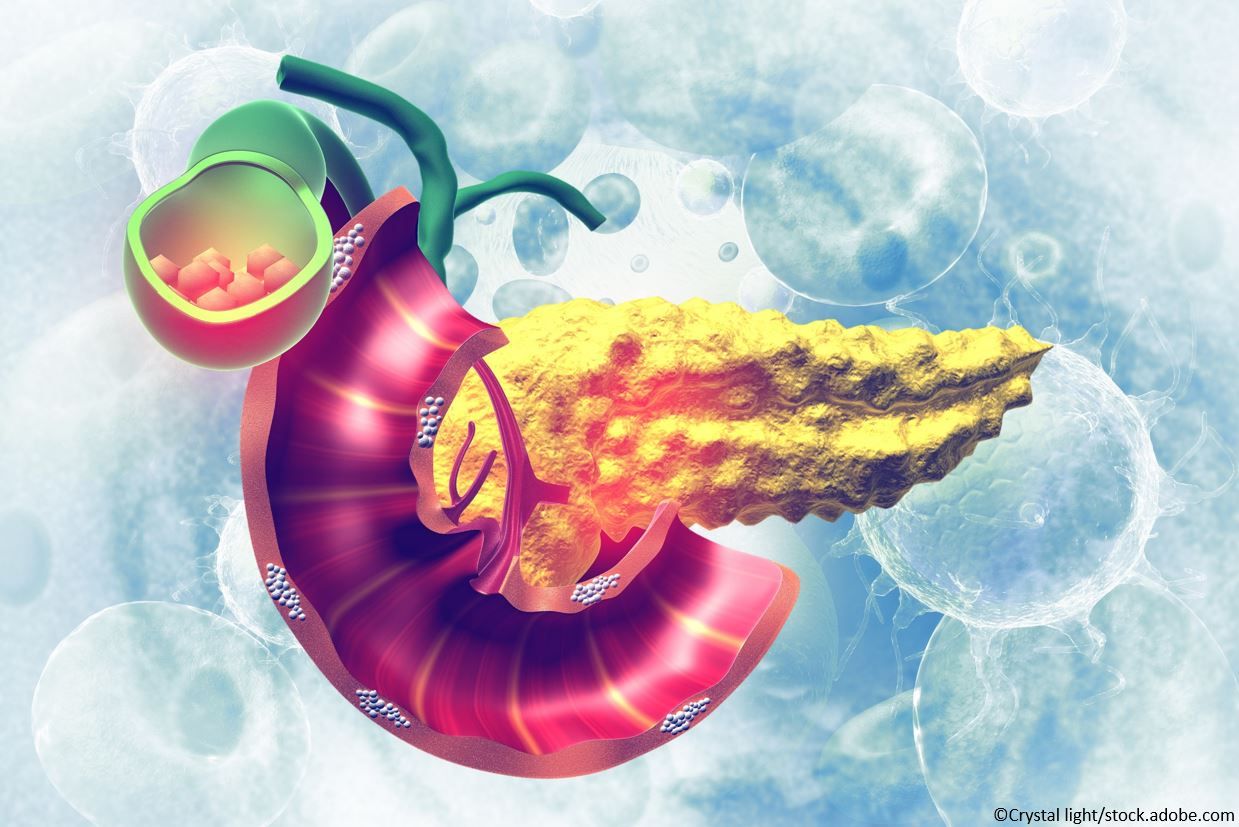Eli Lilly’s Tirzepatide Significantly Reduced A1c, Body Weight in Adults with T2D
Tirzepatide (Eli Lilly and Company) yielded superior hemoglobin A1c (A1c) and body weight reductions from baseline across 3 separate doses vs injectable semaglutide 1 mg in adults with type 2 diabetes (T2D), according to new topline results from the SURPASS-2 clinical trial.
©Crystal light/stock.adobe.com

In SURPASS-2, the largest trial to date in the SURPASS phase 3 development program for tirzepatide, preliminary data showed that the highest dose of tirzepatide tested (15 mg) reduced A1c by 2.46% and body weight by 27.3 lbs (13.1%), double the weight loss compared to semaglutide 1 mg, according to a new Eli Lilly press release.
Tirzepatide is a novel, investigational, once-weekly dual glucose-dependent insulinotropic polypeptide (GIP) and glucagon-like peptide-1 (GLP-1) receptor agonist.
Tirzepatide integrates the actions of both incretins into a single molecule, representing a new class of medicines being studied for T2D treatment, according to the press release.
The SURPASS-2 clinical trial is a 40-week, randomized, open-label trial comparing the efficacy and safety of tirzepatide to semaglutide in adults with T2D inadequately controlled with ≥1500 mg/day metformin alone.
Researchers randomized 1879 study participants to receive either tirzepatide 5 mg, 10 mg, or 15 mg or semaglutide 1 mg. Participants had a mean duration of T2D of 8.6 years, a baseline A1c of 8.28%, and a baseline weight of approximately 206 lbs.
Results
Researchers found that 92% of participants who received tirzepatide 15 mg achieved an A1c <7%, the recommended goal for most adults with diabetes by the American Diabetes Association.
The lowest doseof tirzepatide (5 mg) was shown to reduce A1c by 2.09% and body weight by 17.2 lbs. (8.5%), significantly greater than semaglutide at 1.86% and 13.7 lbs. (6.7%), respectively.
Also, 51% of participants taking tirzepatide 15 mg achieved an A1c <5.7% (the level seen in patients without diabetes) vs 20% of those taking semaglutide.
"Head-to-head studies are the gold standard for clinicians assessing the efficacy of investigational treatments, and these results show that all three doses of tirzepatide delivered superior A1C and weight reductions compared to the highest approved dose of semaglutide to treat type 2 diabetes," said principal investigator Juan Pablo Frías, MD, medical director, National Research Institute, in the Eli Lilly press release.
"Newer treatment options may help people with type 2 diabetes achieve their A1C and weight loss goals. In SURPASS-2, tirzepatide delivered clinically meaningful efficacy, beyond what has been seen with an existing medicine in the established GLP-1 receptor agonist class,” continued Frías.
Like other medications in the GLP-1 receptor agonist class, the most frequently reported adverse events across all treatment arms were gastrointestinal-related, including nausea, diarrhea, and vomiting. Treatment discontinuation rates due to adverse events were 5.1% (5 mg), 7.7% (10 mg), 7.9% (15 mg), and 3.8% for semaglutide.
The complete SURPASS-2 study data have not yet been evaluated but will be presented at the upcoming American Diabetes Association 81st Scientific Sessions and published in a peer-reviewed journal in 2021.